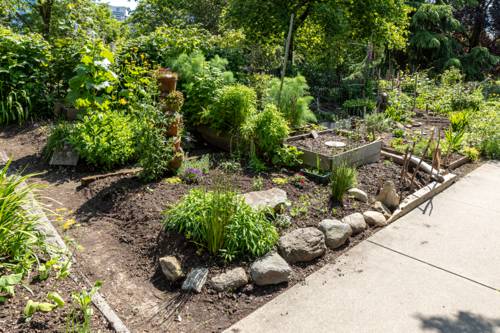
FAQ About Indoor Plant Adaptations to Urban Environments

How do indoor plants adapt to limited light in urban environments?
Indoor plants often have adaptations such as broader leaves or the ability to efficiently use limited light to photosynthesize. Many indoor plants, like the snake plant or peace lily, have evolved to thrive under lower light conditions typical of urban apartments or offices. Additionally, some plants can adjust by directing their growth towards available light sources or reducing their growth rate to conserve energy.

What are the best indoor plants for air purification in urban settings?
Several indoor plants are renowned for their air-purifying abilities. The NASA Clean Air Study identified plants such as the spider plant, snake plant, peace lily, and English ivy as effective at reducing indoor air pollutants like benzene, formaldehyde, and trichloroethylene. These plants help improve air quality by absorbing harmful chemicals through their leaves.

How do indoor plants manage to survive in confined spaces?
Indoor plants survive in confined spaces through several adaptations. Many have compact growth habits and small root systems that can thrive in limited soil. Some, like succulents, store water in their leaves, reducing their size without compromising their survival. These plants often require less frequent watering, making them ideal for urban living.

Can indoor plants thrive despite urban pollution?
Yes, many indoor plants are capable of surviving and even thriving despite the urban pollution. Plants like pothos, bamboo palm, and peace lily are known for their resilience to common urban pollutants. They can absorb pollutants through their leaves and roots, partially filtering the surrounding air and creating a healthier indoor environment.

What are the common challenges for growing indoor plants in urban areas?
Some common challenges include limited natural light, fluctuating indoor temperatures, and air quality issues. Urban environments can often be dry due to heating systems, which can affect plant hydration. Additionally, confined spaces may lead to restrictions in plant size and growth. Despite these challenges, many indoor plants are well-suited to adapt and can thrive with proper care.

Which indoor plants require minimal maintenance in urban settings?
Succulents and cacti are popular low-maintenance indoor plants suitable for urban settings. Additionally, the snake plant, ZZ plant, and pothos are known for their robustness and minimal care requirements. These plants typically need less water and can tolerate lower light levels, making them ideal for busy urban lifestyles.

How can I help my indoor plants adapt to fluctuating temperatures?
To help indoor plants adapt to fluctuating temperatures, place them away from drafty windows and doors. Make sure they are not too close to heating or cooling vents. Using a humidity tray or a room humidifier can also help maintain stable moisture levels that many houseplants require. Regularly check the soil moisture to avoid over or under-watering, which can be exacerbated by changing temperatures.

Are there indoor plants that can reduce noise pollution in urban environments?
While no plant can completely eliminate noise, some species can help reduce it. Large-leafed indoor plants like fiddle leaf figs, rubber plants, and monstera can absorb sound waves and reduce ambient noise levels. Arranging several larger plants together can create a natural sound barrier, which can be beneficial in noisy urban apartments or office spaces.

How does indoor air quality affect plant growth in urban settings?
Indoor air quality can significantly impact plant growth. Poor air quality, often found in urban environments due to pollutants and low humidity, can stress plants and inhibit their growth. However, many plants not only tolerate such conditions but actively help improve air quality by absorbing toxins and producing oxygen.

What is the role of humidity in the health of indoor plants?
Humidity plays a crucial role in plant health, especially for tropical plants often kept indoors. Urban environments can be particularly dry, which may lead to browning leaf tips or leaf drop. Increasing humidity through misting, using a tray of water, or a humidifier can help these plants thrive, simulating their natural habitat conditions.
